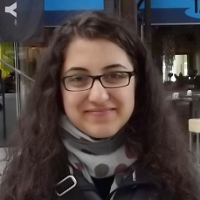
SENA KAYASÜ (ARCH/III)
sena.kayasu@ug.bilkent.edu.tr
When I was setting out for Prague, my father told me that this isn’t a city that simply contains Gothic architecture—it is a Gothic city. Of course, in architecture, the word Gothic does not characterize teenagers who are overfamiliar with black nail polish and purple hair dye. It describes a building aesthetic that envisioned tall, spacious structures that would reach up to the heavens to put the fear of God in the illiterate Christian community of the time, with a fair number of gargoyles and, yes, many spires.
Once I got to Prague, I saw that despite having a lot of post-13th-century construction, especially from the Soviet era, the city maintains the air of a medieval settlement. The fact that the weather was overcast and gloomy every single day I spent there must have helped this perception. The buildings were new, but the older ones, cloaked by the clouds, had such a presence that the feeling of the Middle Ages could not be avoided. That feeling, however, is in no way a disadvantage to the city. Prague is not underdeveloped or backward. In fact it, and its citizens, maintain an interest in the fields of arts and sports that makes these pursuits routine. They somehow avoid being elitist about it, as people in some Western European cities are. This is, simply and naturally, the way Prague is.
The “urban fabric,” as people in architectural fields call it, varies greatly according to the interests of Praguians. A very visible, physical aspect of the city that echoes this consistency is the tramway system. I’m not saying this arbitrarily—the tram penetrates into the dense mess of the historic core of the city, the Old Town, as well as reaching the outer districts. The electrical wiring that runs above may be seen against any of the old cathedrals, or above the view of the river from the street. This is a disadvantage of the tram system (“visual pollution”), but to me, the advantage of being able to see the city while traveling/commuting aboveground outweighs it.
The tram is also a very prominent symbol of Prague’s insistence on the symbiosis of the old and the new. How does such a symbiosis work, you ask? Well, the Gothic buildings have 19th- or 20th-century additions on the sides, the ancient river is interrupted by dams, and there is a John Lennon wall in the middle of Old Town.
In addition, all of this is shrouded in “northern light.” Northern light is a characteristic of the northern (surprise!) half of Europe. Countries like Germany, Norway and the Czech Republic often have overcast skies. Even on sunny days, the lights hits them at such an angle as to create the more distant, homogeneous light that we see in winter. It makes these lands seem colder to us, but what it actually does is melt everything into each other. Because the light is more evenly distributed, we see buildings, streets and people veiled in the same tones. The world is more whole. Southern light, on the contrary, is more direct: it emphasizes certain aspects of our vision, as is the case in Turkey (usually in the warmer months), Greece and Italy. It is for this reason that the buildings up north have more skylights than ours do.
Skylights are the windows in the roof that provide sunlight more effectively. In Turkey, in August, this would give someone a heat stroke. In Prague, though, the skylight in my hostel room was one of my favorite bits of the trip. The light wasn’t so strong as to wake anyone up at dawn (nobody spotted the little machination that closed the blinds, somehow), but it gave the room such a pleasant feeling. I’m very glad to have liked the nice little six-person room, since this was my first time in a hostel. I can tell you right now, it’s not nearly as nasty to stay in one of those establishments as everyone seems to think. People go there to make new, albeit temporary, friends. So the employees and visitors form a much more genial community than you can see anywhere else.
I appreciated this even though I wasn’t there to socialize. Along with a few students from my studio, I went there to see the site we’re building on and to work. Our site is a 45m2 vacant lot in the middle of Bubny, right across the river from Old Town. There is a similar, but much larger, area in Ankara as well. It’s in İskitler, close to Ulus and in a desirable location. We studied it a year ago. It’s worth noting, in my opinion, that the glass-and-steel high-rise commercial center that was deemed appropriate for Iskitler was suggested for Bubny thrice, in three different competitions. It’s also noteworthy that the municipality there is still looking for an alternative project, one that belongs in Prague and not in New York or London, which is why we were there. Not all cities are meant to look like each other, else I would be out of a job before I even graduated.
